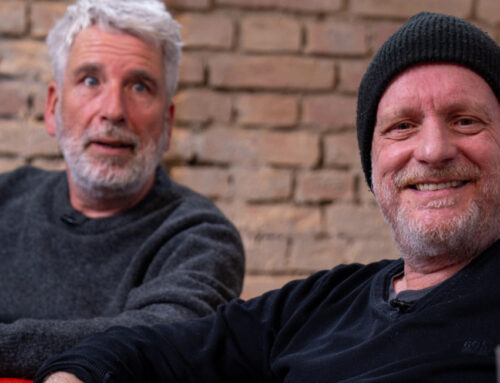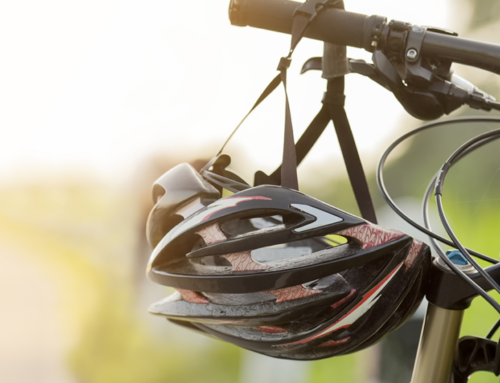Off to the cool water!
From the first WaterWear to waterproof audio processors, a lot has been done to help users of hearing implants hear the sound and rippling of water while surfing and swimming. What many don’t know: you can also snorkel, dive free and even bottle dive without hesitation!
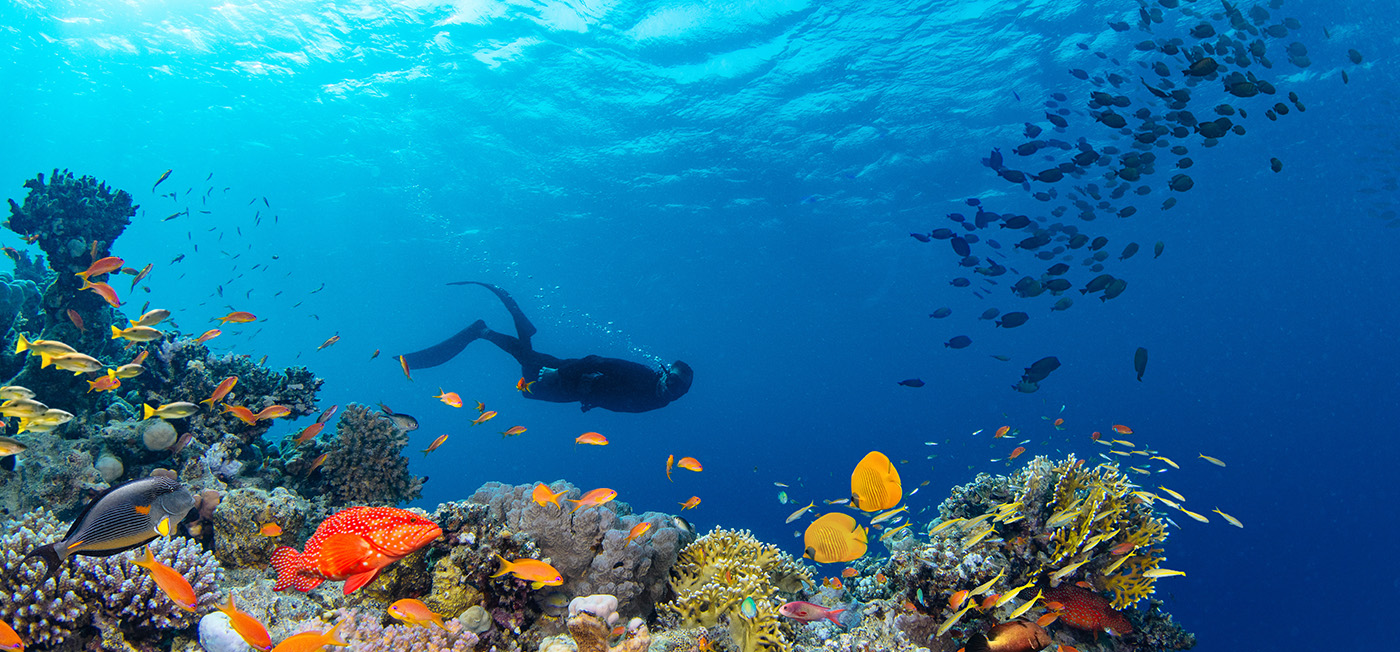
Eva Kohl
"I can’t believe it’s so noisy here!" wondered eight-year-old Melanie at the beginning of 2015. At a CIA event, she was allowed to test the RONDO CI processor with the newly introduced WaterWear in the swimming pool. For the first time in her life, she could hear the splashing when children jumped into the water, the screams while playing water polo, and even the muffled sounds underwater.
Earlier generations and the WaterWear breakthrough
Earlier generations of audio processors were designed to be secure against sweat. At that time, manufacturers and users did not dare to think of water resistance. When the first WaterWear was released in 2015, it was a sensation: a razor-thin, waterproof plastic cover and a closure sheet. The simple system has proven itself since then: the coating is pulled over the outer parts of the CI system and everything is sealed by attaching the self-adhesive sheet to the flat side. Assuming proper handling, the audio processor is watertight for up to 16 hours.
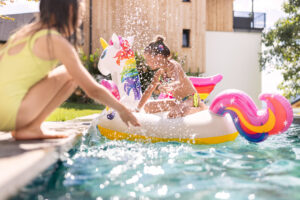
With the protection class IP68, users of SONNET 3 or RONDO 3 audio processors can enjoy the cool water without hesitation! ©Daniel Zangerl/MED-EL
Proven: WaterWear
The protective coating WaterWear was tested for two hours four metres deep under water. This means that it meets protection class IP68, even for drinking water, chlorinated water and salt water. In the meantime, all MED-EL audio processors – for users of cochlear implants, BONEBRIDGE or VIBRANT SOUNDBRIDGE – have suitable WaterWear coatings. Although later generations of audio processors have become increasingly tight against water ingress even without a protective cover, the new SONNET 3 also complies with IP code 68 even without a protective cover, provided it is undamaged!
With WaterWear, the audio processor must be powered by rechargeable batteries or alkaline or silver oxide batteries. The waterproof WaterWear coating prevents the use of zinc-air batteries because not enough air can penetrate through the protective coating. It is best to insert new batteries before sealing! After each battery replacement, the cover itself must be replaced regularly and sealed with a new sealing plate.
Those who want to use their audio processors in natural water should not only consider watertightness and energy supply, but also protect the system against loss. To do this, you can attach a hair clip to the WaterWear, use a sports headband – a special headband with pockets incorporated on both sides for the audio processors – or quite simply a conventional bathing cap.

Arnold Erdsiek, CI user: "Underwater to perceive the soundscape and above water the opportunity to talk - I enjoyed it!" ©private
Listening to the sea bream swarming
CI user Arnold Erdsiek used the sports headband and secured everything additionally with the rubber band of the diving goggles when he first tested the then still new WaterWear for RONDO in the open sea in 2015. So equipped, the German went snorkelling with his Spanish friend Antonio in a rocky bay. "I enjoyed the splashing of the water while swimming, the sounds of the air being drawn by the snorkel, the sudden silence underwater – I first noticed this soundscape again," he recalls. "But also the opportunity to talk to Antonio about water."
"The funny striped fish swarmed us from all over the place, most of them between 20 and 25 centimetres long: we were in the middle of a fish swarm with hundreds of sea bream, which could be fed directly from the hand!" recalls the bilateral CI user. "Funny when they look directly into the diving goggles with their black eyes. Amazingly nimble and skilful, the fish move, but there is not a single touch." Then he laughs mischievously: "Oh, yes, I could say one more thing without a doubt at the time: you can't hear fish – even if you can hear them."

Daniel Gilbert Weber, CI user and former diving instructor: "Diving is a lot of fun, provides a deep insight into the fascinating underwater world and teaches us to respect and preserve the environment!" ©private
A diving instructor with a cochlear implant
Daniel Gilbert Weber has always been fascinated by the underwater world. He went snorkelling, but also ventured to dive to a depth of 20 metres while freediving – without a compressed air bottle. At that time, he was still using conventional hearing aids, but he didn’t dare to dive: "I thought that because I didn’t hear anything in the water without hearing aids, it would probably be too difficult to teach me how to dive." Until a diving instructor friend in Kenya invited him to do so in 1983. "He explained to me that we use sign language developed for divers in the water anyway." Weber became an enthusiastic scuba diver and expanded his knowledge and skills in this regard into more and more areas of expertise, for example as a cave diver.
In 1995, the Swiss-born son fell completely deaf. He decided to implant and received his first cochlear implant the following year at the ENT department of the University Hospital Inselspital in Bern. However, this change did not change his passion for diving – quite the contrary: he passed the CMAS exam with two stars in Germany – an internationally valid diving exam – and then went through the diving instructor training of PADI, an international organisation for equipment divers and diving instructors in Switzerland. In Switzerland – and occasionally also in Egypt – he was active for 22 years as a PADI Master Scuba Diver Trainer.
Scuba diving also with hearing implants
"Virtually any woman or man can practice diving into old age, even with CIs," Weber is convinced as an experienced diving instructor. Only average fitness and normal health are required. The latter is checked during a health examination – ideally with a diving doctor – and by a questionnaire that every diver must complete before training. However, there are even specially trained diving instructors who make diving possible for wheelchair users, for example.
"For CI carriers like us, approval from our otolaryngologist is also required," explains Weber. "But even though the right organ of balance has not worked for me since my deafening, I have not experienced any impairment so far." CI users have to observe the pressure load released for their respective implant during the depth of immersion. Daniel Weber has cochlear implants from MED-EL on both sides: All MED-EL CIs may be pressurised up to 6 bar, which corresponds to a maximum depth of 50 metres – ten metres more than recommended for divers. "I did several hundred dives to this depth with my CIs. Whether in warm water up to 32 degrees Celsius or close to freezing, I have never experienced the slightest impairment during diving times of well over an hour."
Deep underwater, hearing is not essential
At these depths, no audio processor is waterproof anymore; the processors must be removed before each dive: "I recommend storing the processors in at least a splash-proof box," explains the experienced scuba diver. Not being heard underwater is no problem with diving. The communication is nonverbal – and to quote Arnold Erdsiek once again: "You can't hear fish."
However, the danger of an approaching boat could be heard by hearing divers. "Underwater but not undetectable," retorts Weber. Sound propagates under water about five times faster than in the air. For this reason, the time difference between the two ears is too small to be able to determine the direction of the sound source therefrom. Weber therefore feels like listening to fellow divers: "I don’t hear the boat, but I feel the vibration. Like the listening divers, I have to place it with my eyes."
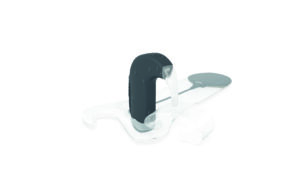 The Freedom of Waterproof Audio Processors
The Freedom of Waterproof Audio Processors
Once again, the current generation of audio processors is a blessing: the new SONNET 3 is IP68-rated and even leak-proof when submerged. Melanie Fraisl was among the testers at the launch of the SONNET 3 and she demanded a lot from the processor: "I tested the SONNET 3 in chlorine water." The processor survived it unscathed and Melanie was thrilled: "Gossip while swimming!"
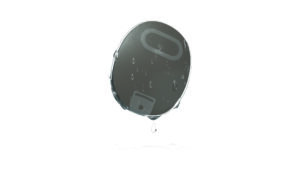
Who wants to go safe - in natural waters or because the tightness of the device is not completely secured by small scrapes - can also use WaterWear. ©MED-EL
Waterproof even with zinc-air batteries
If the SONNET 3 accidentally falls into the water, it is also waterproof with zinc-air batteries. However, the batteries quickly run out of air underwater. Therefore, other battery types are better suited for swimming. The also waterproof RONDO 3 works with an implemented battery anyway. However, the promised watertightness only applies to undamaged processors – even an unfavourable swarf from the last drop can impair the watertightness against water.
WaterWear for extra protection
Therefore, a suitable WaterWear is also available for the latest MED-EL device generation. When swimming in natural waters, you should also secure the processor against loss – or take it off first.
In a Nutshell: With a Hearing Implant On and In the Water
The IP code indicates the protection of a product against intrusion – Ingress Protection. The first digit refers to protection against solids such as dust, and the second digit refers to protection against liquids.
This code is determined through tests defined by the International Electrotechnical Commission (IEC). This European Standardisation Organisation, based in Geneva, cooperates with national standardisation institutes and sometimes with the International Standardisation Organisation (ISO).
Processor Upgrade for Even More Water Protection
The IP code of your audio processors is listed in the user manual under technical data. The SAMBA processor for BONEBRIDGE and VIBRANT SOUNDBRIDGE, introduced over ten years ago, had protection class IP32: class 3 for dust-proof and class 2 for dripping water at an angle of up to 15 degrees.
Later models had IPx4: splash-proof. RONDO 3 and SONNET 3 from MED-EL conform to IP68: the function of the audio processor is ensured even with up to 60 minutes of immersion one metre deep in calm, clean water – provided it is undamaged and correctly assembled. The microphone cover and any jack cover must also be intact and closed.
Play It Safe During Water Sports
In real life, small scars or damage can often not be ruled out. Swimming pool water usually contains chlorine, and sea or river mouth water is saline. To be safe, you can use WaterWear. Protection against loss, especially in natural waters, is highly recommended!
For scuba diving, the processor must be removed despite IP68. Depending on the type of implant, users can dive to different depths: according to the user manual, with MED-EL cochlear implants up to 50 metres! On request, the manufacturer confirms that VIBRANT SOUNDBRIDGE and BONEBRIDGE are also tested at 6 bar pressure, which corresponds to 50 metres of sea depth. The maximum recommended 40 metres for divers are therefore possible with MED-EL implants. The CIs from MED-EL were even tested at 9 bar for a generous safety reserve.
Note: An excessively firm band of the diving goggles should generally be avoided in the implant area.

